E-Archive
Articles
in Vol. 9 - May Issue - Year 2008
Surface Finishing Developments in the Die Casting Industry

Pic. 1: slide grinding media: plastic and ceramic chips, stainless steel satellites
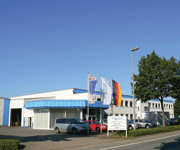
Pic. 2: Spaleck production facility in Bocholt, Germany
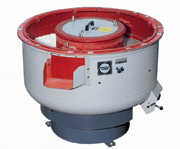
Pic. 3: round bowl batch vibrator type VA
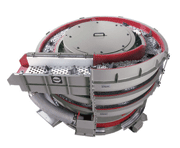
Pic. 4: flow-through finishing vibrator DL
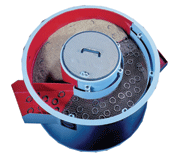
Pic 5: round bowl granulate drier
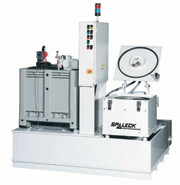
Pic. 6: Recycling centrifuge ZMT4F - reducing water consumption and costs
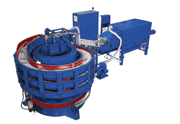
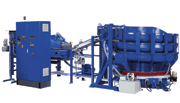
Pic. 7-8: Flow-through installation DL1000 combined with hot air drying-system BT240
The die casting industry has many established methods for refining surfaces of metal and plastic parts, including the effective process of mass finishing. The technology of vibratory finishing, or slide grinding (to use a literal translation from German), has had many new developments in the past few years, and there is still potential for future innovation in this field of surface finishing.
What is slide grinding?
The surface finishing method of slide grinding is a chemical-mechanical working process for the refinement of surfaces. Media and parts, in combination with water and compound as a chemical additive, move within a machine by the action of a vibratory drive. Depending on the requirement, slide grinding can deburr, smooth, polish, degrease, clean, shine or edge-break, in order to best suit the part application.
Spaleck Surface Finishing Technology
Spaleck Oberflächentechnik of Bocholt, Germany, is a leading specialist in surface finishing, and can look back on 80 years experience in that special field of slide grinding. Based on a history of the manufacture of established equipment such as tumbling barrels, vibratory and centrifugal finishing machines, Spaleck has engineered complex, automated and customized systems. The development of new treatment technologies has become the main focus for Spaleck. The drive for optimized processes and cost saving automation for the die casting industry has resulted in the new generation of flow-through vibrators DL 1000 and 2000.
What does slide grinding mean in the special field of die casting?
Many products of the die casting industry are manufactured for high-end industry purposes like the automotive industry, where consistent high-quality standards have to be maintained. Here, the quality control demands do not tolerate part to part variation.
The parts must not touch each other. They must not fall and damage. Despite high volume mass finishing treatment, they have to be handled in the most sensitive, and at the same time, most efficient way.
The flow-through machines supply two main advantages. Within these machines there is a steady flow of treated parts, similar to parts on a conveyor belt, which keep their distance and are not able to damage each other by contact. The second main advantage is that the steady flow of parts can easily be integrated into fully automatic industrial production lines. If the machine receives a part in a certain time interval, it is passing on a part in exactly that time interval to the following machine or storage. Washing machines, driers, conveyors, storage hoppers, quality control machines, robotics, every kind of pre- or after-treatment or handling can be combined with such a finishing machine.
Customary in the market are flow-through machines with a length of approximately 6 meters and designed in the so called long-trough form. The most modern concept is the vertical spiral, where a very long working channel is combined with the lowest space requirement, such as in the Spaleck DL1000 and 2000. The engineering challenge is here to maintain the same perfect movement of parts as in the classical conveyor form, and Spaleck have established installations with treatment times of over 20 minutes.
The main effect within the Spaleck Spiral is not so different from common grinding machines. A vibratory motor delivers enough power to roll and move the mass of media, parts, water and compound around the channel. Nevertheless the perfect adjustment of that motor is critical for a fine movement of the treatment mass, and especially here many machines of various manufacturers differ enormously in their engineering quality. With the vibration, the grinding impact of the media comes into effect on the part surface. The main task here is to deburr the part. As very often the die casting parts are made of soft material like aluminum and zinc, the media is usually made of plastic, and seldom ceramic. Here every kind of part-material has its own special media quality, and each part shape has its own selected media geometry.
This development goes even further. Parallel to the introduction of the vertical spiral machine-concept, new qualities of media with much higher grinding rate have been developed. These new types of abrasive media make it now possible to treat parts in a flow-through machine, which were till then not treatable by that kind of process. Of course this opens many new possibilities for parts, which had previously been batch processed.
At the end, every Spaleck slide grinding process is a perfectly adjusted mixture of machine layout and tuning, water/compound ratio, and media quality/geometry.
After-treatment combinations
Sometimes the die cast parts have to be very clean. The slide grinding process itself is cleaning the parts, but today there are very strict demands concerning the cleanliness of the parts surfaces. Often, surface finishing equipment, like flow-through installations, are combined with washing machines, driers and process water installations. As slide grinding is always done with water, the process consumes water. To reduce the consumption for environmental reasons, a waste water recycling unit can clean the process water. After the grinding process, the parts leave the vibratory machine in a wet state. Different drying machines offer various kinds of further surface handling. In a granulate drier for example the part is not only dried, but also cleaned, because the corn cob or walnut granulate is working like a sponge to clean the surface. In other procedures, where a totally spotless drying is necessary, a hot-air drying process is used. Before the parts enter a hot-air drier, they are normally rinsed with deionized water to prevent any water spots during the drying step.
Slide Grinding can enhance the productivity of die casting production facilities and simultaneously meet several finishing demands. As automation becomes more and more important, flow-through finishing installations have become the state of the art equipment for modern deburring and grinding treatment. As in other industries, parallel to that technical development, quality control and information management is also becoming more important in the die casting industry. This has led to the design of fully automatic finishing lines with complex PLC control, connected to PC-control and databases. This system is called OPEN PROCESS CONTROL. All process parameters for the production history of the machine can be stored now for years, delivering an exact record about the customer products processed in the machine. For the automotive sector, with its high documentation and legal demands, this OPC technology is the way of the future.
For the die casting industry, these innovations will offer new efficiencies and quality improvements in order to meet the manufacturing challenges of tomorrow.
For Information:
Spaleck Oberflächentechnik GmbH & Co. KG
Schlavenhorst 117, 46395 Bocholt, Germany
Tel. +49.2871.9500 0, Fax +49.2871.9500 95
E-mail: info@spaleck.biz
www.spaleck.biz



























